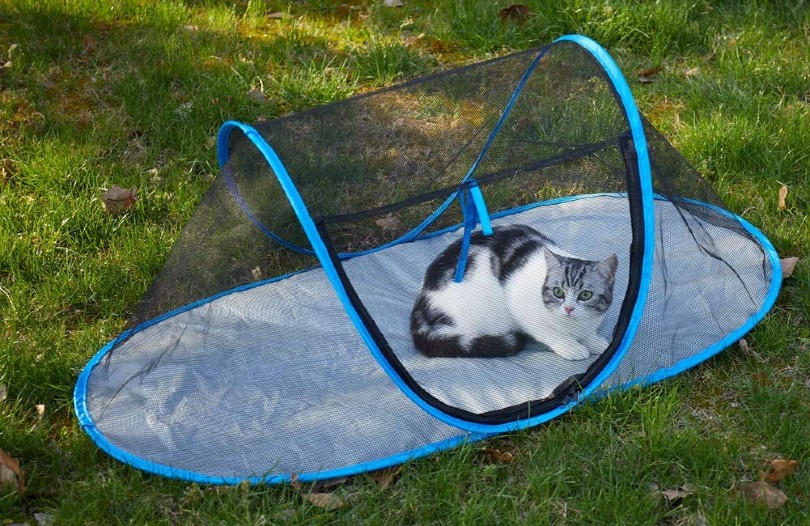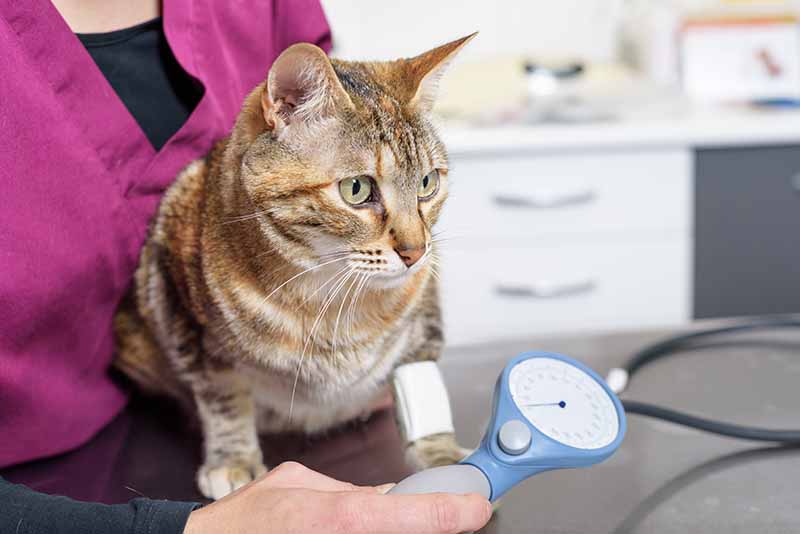How Cats Endocrine Systems Work: Vet Reviewed Facts & FAQ
By Jessica Kim
Updated on
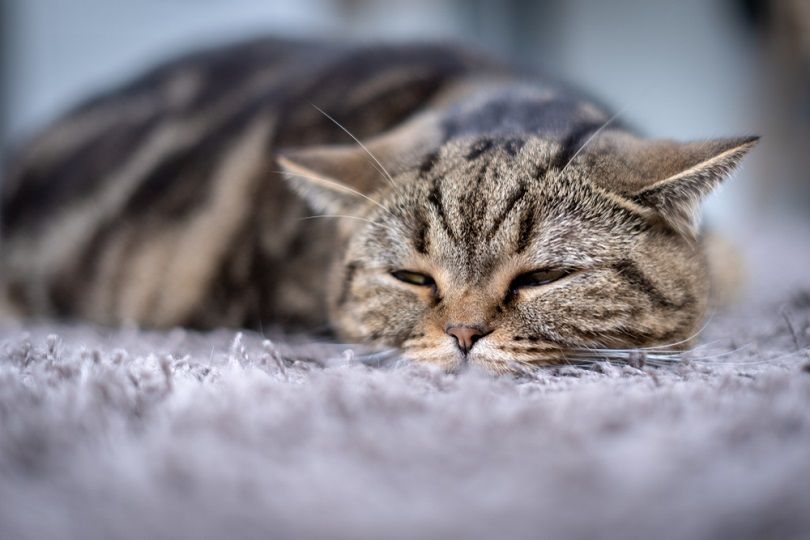
The endocrine system is a complex bodily system that helps control and regulate various functions of a cat’s body. While we can’t see a cat’s endocrine system from the outside, it plays a necessary and vital role in a cat’s daily life. A healthily functioning endocrine system ensures that a cat is able to go about its day-to-day without any issues, while a malfunctioning system can contribute to several health issues.
Knowing the basics of the feline endocrine system can help you take better care of your cat by making you aware of how imbalances can affect your cat’s health. Here’s what you need to know about this complex system.
How Does It Work?
The feline endocrine system is made up of several different glands and organs. These glands and organs produce hormones, which are chemicals that affect a wide range of body functions, such as stress responses, insulin production, and breeding and mating behaviors.
The body knows when to release and adjust the levels of hormones through specific glands linked to each hormone. One of the most notable glands in the endocrine system is the pituitary gland, also known as “the master gland.” The pituitary gland releases hormones that trigger other glands to release their hormones, including the adrenal, thyroid, and sex glands.
Hormonal imbalances occur when a gland overproduces or underproduces hormones or isn’t able to regulate hormone levels in the body. In some cases, a gland can release a pair of hormones with opposite functions. These hormones work to keep balanced levels within the body. Therefore, a hormonal imbalance may occur if one of the hormones in a pair isn’t functioning properly.
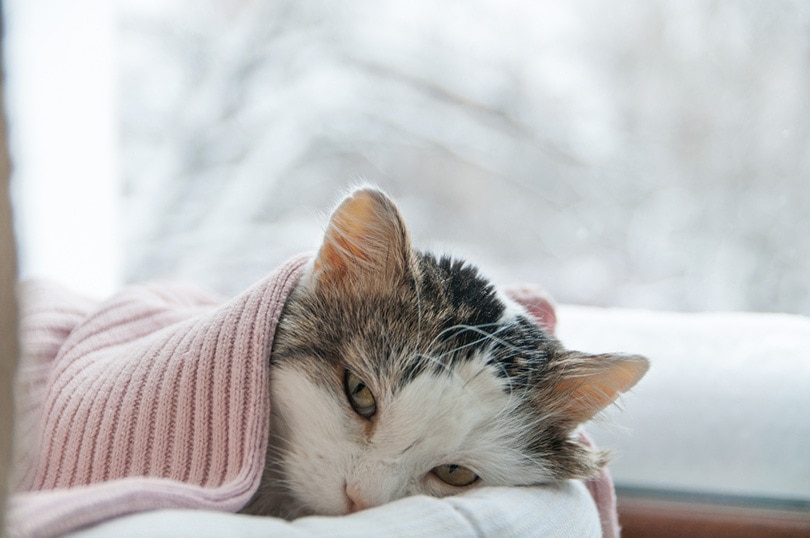
What Are the Different Types of Glands in a Cat’s Endocrine System?
A cat’s endocrine system is made up of many glands. Here are some of the most common glands and their functions.
Pituitary Gland
The pituitary gland is located at the base of the brain. Though relatively small, it controls a wide variety of other endocrine glands and organs. For example, it produces a growth hormone (somatotropin) that works to multiply cells and body tissues and is involved in other body functions, such as regulating sugar levels. The pituitary gland also regulates the adrenal and thyroid glands and is responsible for controlling the functions of the ovaries and testes.
Thyroid
Cat thyroid glands consist of two lobes, with one located on each side of the neck. Their primary responsibility is regulating a cat’s metabolic rate. They produce the hormones thyroxine (T4) and triiodothyronine (T3), which regulate the rate of chemical reactions occurring in the body and have an impact on almost all of the organs. When the thyroid produces insufficient amounts of these hormones, a cat can develop hypothyroidism, though this is rare. When there’s an overproduction of hormones, a cat develops hyperthyroidism, which is fairly common in middle-aged and older cats.
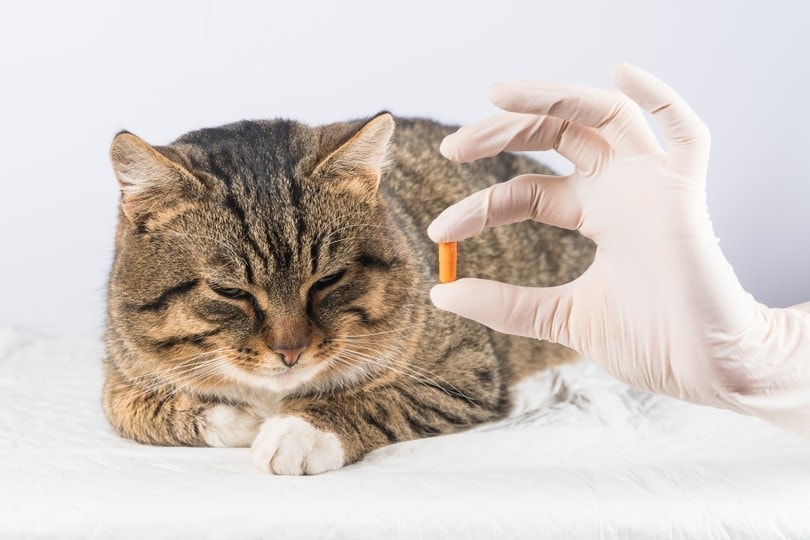
Adrenal Glands
A cat’s adrenal glands are situated just in front of the kidneys. These glands are made up of a cortex and a medulla and are responsible for producing several different kinds of hormones. They produce glucocorticoids, mineralocorticoids, and sex hormones like androgens, estrogen, and progesterone. Norepinephrine and epinephrine, also known as adrenaline, come from the adrenal glands. Adrenal hormones control metabolism, electrolyte balance, blood pressure, blood glucose, the immune system, response to stress, and the reproductive system, along with many other functions and roles.
Pancreas
The pancreas is located near the stomach and between the left kidney and the intestinal tract (duodenum). It produces enzymes that help with digestion, along with the hormones insulin and glucagon. Insulin and glucagon help with regulating blood sugar levels. Pancreatitis, or inflammation of the pancreas, is a common illness in cats that causes various gastrointestinal signs, while diabetes occurs when the body cannot produce or respond to the hormone insulin. For various reasons, insulin resistance plays a major role in the development of diabetes in cats. Both conditions need veterinary attention and long-term monitoring.
Sex Glands
Female cats have ovaries, which produce eggs and sexual hormones, including estrogen and progesterone. These hormones are responsible for egg development, initiating estrous cycles (heat), and preparing the uterus. Male cats have testes, which produce sperm and the sexual hormone testosterone. The production of sperm is regulated by testosterone and a follicle-stimulating hormone from the pituitary gland.
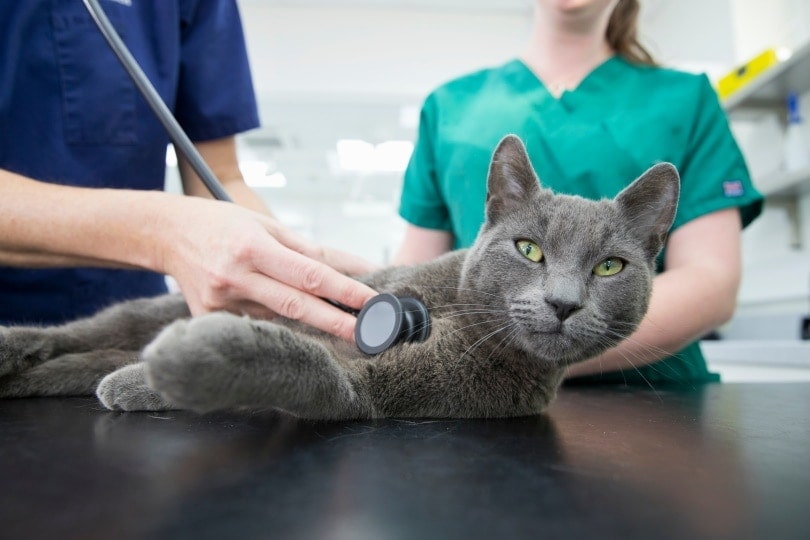
What Affects the Function of the Endocrine System?
Glands in the endocrine system can cause imbalance when they underproduce or overproduce hormones. Glands that underproduce hormones usually cause diseases with the prefix hypo attached to them, and ones that overproduce hormones cause diseases that usually start with the prefix hyper. For example, hyperparathyroidism is often attributed to overactive parathyroid glands, and hypoparathyroidism is caused by underactive parathyroid glands.
Because glands help maintain healthy levels of all kinds of hormones that regulate nearly all processes in the body, imbalances can cause many serious and sometimes even life-threatening health issues. Since glands help with metabolism and nutrient absorption, malfunction can lead to nutrient deficiencies, imbalance of important minerals, and weakened digestive systems.
Glands in the endocrine system can start to malfunction for several reasons. The most common reasons for hormone excess in animals are often benign (non-cancerous) tumors or hyperplasia of the endocrine glands. Hyperplasia is a benign enlargement of an organ or tissue due to an increased number of cells. Malignant (cancerous) tumors can also stimulate excess hormone production. Hormone deficiencies are usually a consequence of autoimmune disease and the destruction of an endocrine organ. Since glands work together in a feedback system that sends signals back and forth, one malfunctioning gland can end up affecting another gland’s ability to increase or decrease hormone production. Both non-cancerous and cancerous tumors can also affect a gland’s ability to regulate hormones properly. Endocrine disease can also be caused by an infection or be present since birth (congenital).
Frequently Asked Questions
How are endocrine disorders in cats diagnosed?
Endocrine disorders are diagnosed in various ways. First, your veterinarian will conduct a general physical exam. Your cat will require standard blood tests, which will show their general organ functions, blood glucose, and electrolyte levels, alongside the more specific blood testing focused on certain levels.
Most blood tests are designed to measure how much of a specific hormone is being produced. This can often be sufficient to diagnose many endocrine disorders, but sometimes additional blood testing, urine tests, and other investigations, such as X-rays or ultrasound scans, might be required.
These will allow veterinarians to get images of certain glands and can help in detecting any abnormalities in size or appearance. Occasionally, the vet may also recommend CT scans or MRIs, especially for organs such as the brain or adrenal glands. Some endocrine disorders can be treated with surgery, and this way, your veterinarian will acquire biopsy samples and send them off to a lab to get a definitive interpretation, especially if a tumor is suspected.
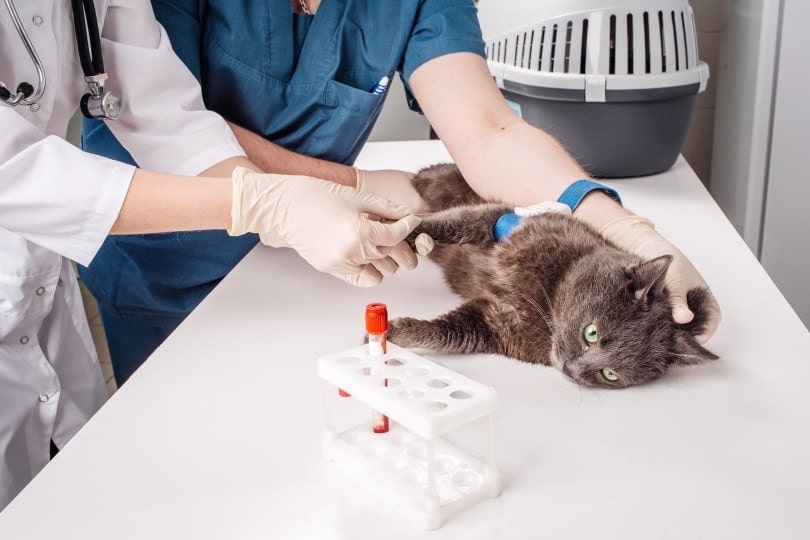
How are endocrine disorders in cats treated?
Treatment for endocrine disorders will vary depending on the gland that’s been affected and the cause that leads to the imbalance. Surgical removal of the entire gland can often be an option, especially when dealing with thyroid or one-sided adrenal disorders and tumors. In some cases, cats may need to start taking medication, often lifelong, to help maintain and control the balance in the body and normal levels of a hormone despite the gland disorder. For example, cats with Cushing’s disease often take medication to suppress cortisol production, but this disorder is uncommon in cats.
Sometimes, cats require hormone replacement treatment, like daily insulin injections in the case of diabetes, which will ensure that the glucose levels are normal despite the pancreatic disorder. Other treatment options for endocrine disorders can include radiotherapy; for example, in the case of hyperthyroidism, treatment may involve radioactive iodine. Your vet will explain all of these treatments and recommend the most appropriate option for your cat.
What is the most common endocrine disorder in cats?
The most common endocrine disorders in cats are hyperthyroidism and diabetes mellitus. Hyperthyroidism occurs when there’s an overproduction of thyroid hormones caused by an enlarged thyroid gland. It’s a common disorder that develops in middle-aged and older cats and is treated with either medication, surgery, radioactive iodine therapy, dietary therapy, or a combination of one or more methods. In most cases, cats have a good prognosis and will just need to take medication for the rest of their lives to regulate hormone production.
Diabetes mellitus in cats is mostly caused by the body’s inability to appropriately respond to insulin. This is Type 2 diabetes, while in Type 1, which is less common in cats, insulin production is reduced. This leads to high levels of glucose found in the blood. Cats diagnosed with diabetes mellitus often require lifelong insulin therapy. For diabetic cats, a low-carbohydrate diet can also be recommended to help regulate blood sugar levels, but this is not a replacement for insulin treatment. Speak to your vet about the best treatment options for your cat. Some cats might go into diabetic remission, which means their blood sugar level normalizes and they no longer require insulin therapy. This may be lifelong or last for months or years.
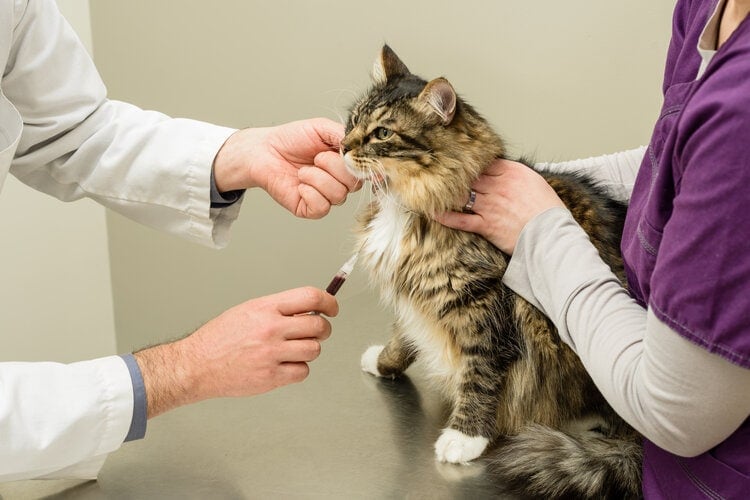
Are there natural ways to keep a cat’s endocrine system healthy?
There are some things that you should do to help your cat stay healthy and maintain a balanced endocrine system. The most important thing is to provide a healthy and nutritious complete diet and a safe, stress-free living environment for your cat. Various factors like diet, exercise, and stress levels can affect your cat’s endocrine system, as well as their general demeanor and health. So, it’s important to feed your cat a nutritious high-quality diet and provide plenty of playtime, mental stimulation, and exercise. It’s also helpful to give your cat a daily routine because this can reduce stress and help your cat feel safe.
However, if your cat develops an endocrine disorder, it is unlikely that you have in any way caused it. Many factors lead to these illnesses, and most are out of our hands. Cats with endocrine disease often need a specialized diet based on their specific illness and protein and caloric requirements. Always consult your veterinarian before you introduce a new food or supplement to your cat’s diet. Your veterinarian can help you determine if certain diets or supplements will be advantageous or disadvantageous for your cat, especially if your cat has an endocrine disorder.
Quick Reference Guide
| Endocrine System Gland and Organs | Hormones Produced |
| Adrenal Gland | Cortisol, aldosterone, estrogen, progesterone, androgens, adrenaline, noradrenaline |
| Kidney | Erythropoietin |
| Pancreas | Glucagon, insulin |
| Parathyroid Gland | Parathyroid hormone |
| Pituitary Gland | Thyroid-stimulating hormone, adrenocorticotropic hormone, follicle-stimulating hormone, luteinizing hormone, melanocyte-stimulating hormone, growth hormone |
| Thyroid Gland | Thyroxine, triiodothyronine |
| Ovaries | Estrogen, progesterone |
| Testes | Testosterone |
Final Thoughts
The endocrine system is an important and complex body system that helps to regulate most functions.
In some cases, cats can develop an endocrine disorder that requires medical treatment. If you notice any sort of abnormal behaviors or changes in your cat’s eating and drinking habits, demeanor, or weight, make sure to consult your veterinarian right away. It’s possible that something in your cat’s endocrine system has been compromised and requires attention and treatment. Make sure you always offer your cat a balanced and nutritious complete diet as well as a healthy and safe lifestyle, but keep in mind that even then, some cats will still get endocrine disorders, as the causes are mostly out of our hands.
Featured Image Credit: one photo, Shutterstock



